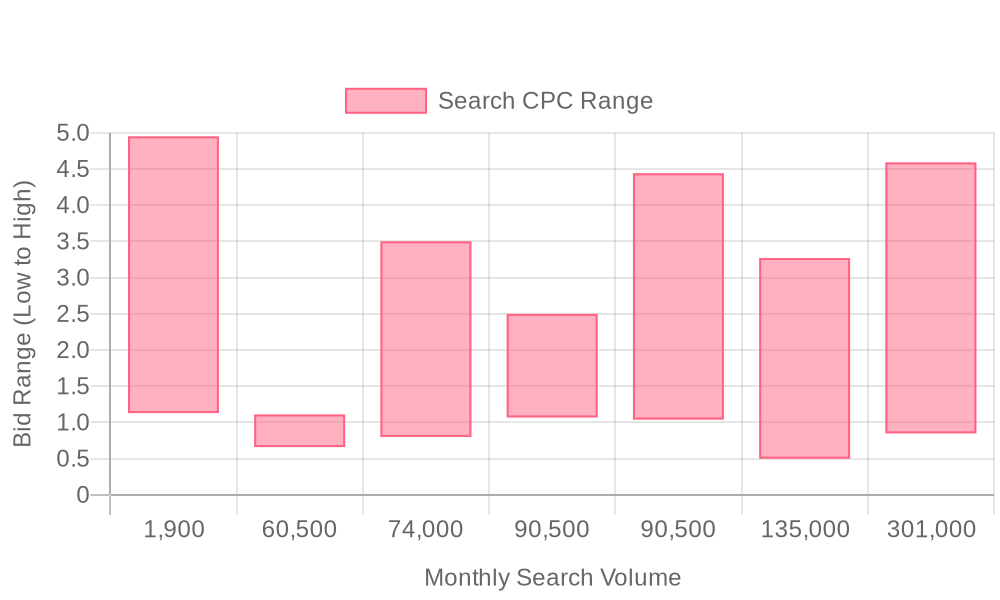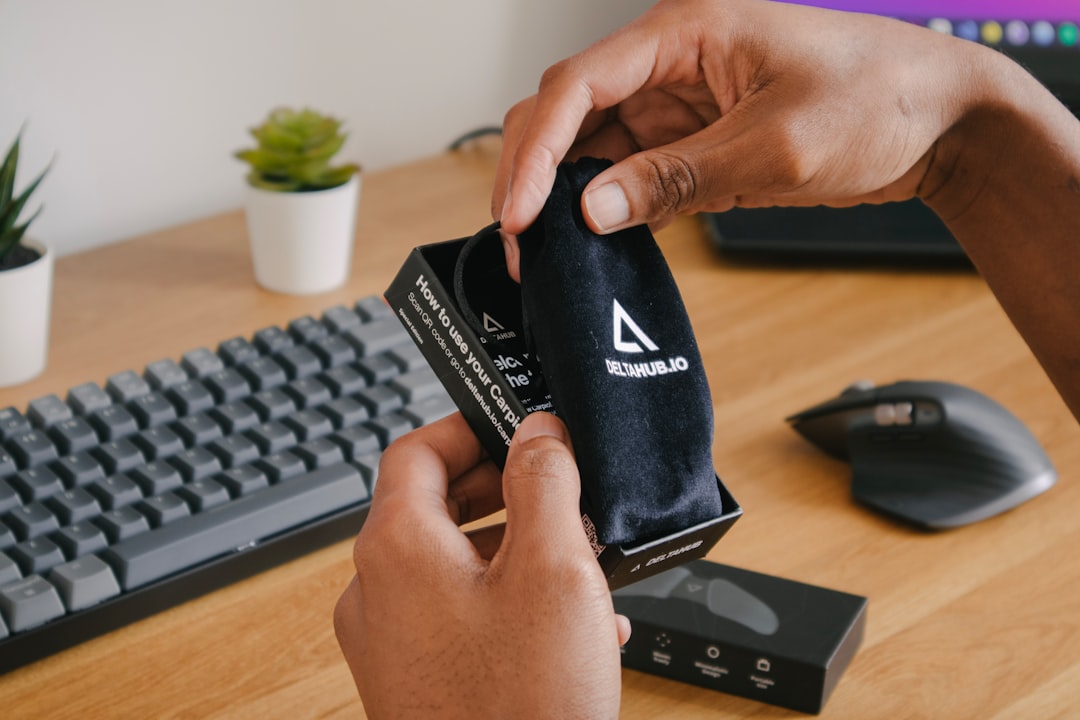
Supercharge your lead generation with a FREE Google Ads audit - no strings attached! See how you can generate more and higher quality leads
Get My Free Google Ads AuditFree consultation

No commitment
Supercharge your lead generation with a FREE Google Ads audit - no strings attached! See how you can generate more and higher quality leads
Get My Free Google Ads AuditFree consultation

No commitment
In today's competitive health product marketplace, challenges such as stringent compliance requirements and specific audience targeting needs can often result in missing high-value prospects—substantially affecting campaign effectiveness. This is where leveraging Google Ads effectively can make a significant difference. The platform not only provides the unparalleled opportunity to capture high-intent prospects precisely when they're searching for solutions but also ensures your ad spend targets those with real decision-making potential. Whether you are marketing nutritional supplements or medical devices, Google Ads offers targeting precision, measurable ROI, and seamless integration with broader marketing efforts. By setting up your campaigns effectively, ensuring compliance, and using data-driven strategies, you can achieve impactful results that align with industry regulations and best practices.

Digital advertising for health products is a complex discipline that hinges on precise targeting, regulatory compliance, and the ability to act on accurate, unified data. Modern revenue teams need more than basic campaign setup; they require a holistic approach to deliver qualified leads and drive measurable growth in the health sector. Explore key marketing analytics strategies for health-focused campaigns to support your efforts.
Top-performing marketers in healthcare PPC understand that every touchpoint, from keyword selection to conversion tracking, must reflect both industry standards and evolving consumer expectations. By leveraging intent signals and unified data, health and wellness advertisers can connect more effectively with high-value prospects and ensure marketing investments yield optimal results.
Effective health product marketing starts with clear, measurable objectives mapped directly to revenue outcomes. Establish whether your primary focus is patient acquisition, lead generation for a specific service line, or direct-to-consumer product sales. Defining these priorities up front ensures your campaign structure and budget allocation align with tangible business value.
Incomplete or fragmented data can severely hinder personalization, especially in healthcare advertising where trust and credibility are paramount. By integrating modern tracking and data platforms like Sona, marketing teams can surface previously hidden intent signals, helping prioritize budget toward audiences most likely to convert. For more on regulatory shifts impacting health ads, see this update on Google Ads’ healthcare policy.
Success in Google Ads for Health Products depends on targeted, compliant keyword strategies. Research health-related terms that reflect true patient or consumer intent, balancing high-volume opportunity with strict adherence to Google Ads policies. Avoid keywords flagged for unverified medical claims or sensitive health conditions to prevent campaign disruptions.
Disconnected signals between keyword targeting and user behavior can result in lower conversion rates or even compliance violations. The most effective teams use real-time audiences to refine keyword lists, ensuring ad copy and landing pages are aligned with both regulatory requirements and actual search behavior. This process allows for dynamic updates as industry trends and audience interests evolve.

Campaign segmentation is critical when advertising health services or products. Segment ad groups by specific health categories, such as telehealth, supplements, or medical devices, to match messaging and offers with distinct audience needs. Check out this playbook on buying stage segmentation to maximize conversion efficiency.
With unified campaign data, revenue teams gain visibility into which segments perform best, enabling real-time adjustments as market conditions shift. Sona syncs high-quality audience data into your CRM and ad platforms for seamless data activation, empowering timely follow-up and ongoing optimization.
Compelling ad copy is essential in health and wellness ads, where trust signals like certifications, clinical evidence, and transparency make the difference. Address common pain points directly, such as regulatory compliance or product efficacy, without overwhelming your audience with technical jargon. For an overview of healthcare ad policy restrictions, review this resource on supplement and health product advertising.
Advanced ad operations integrate visitor identification, allowing teams to tailor headlines and copy dynamically based on who is engaging with the ad. This enables marketers to personalize outreach and build credibility at every interaction, increasing qualified lead flow.
Continuous optimization is essential for healthcare PPC. Monitor performance data closely, identifying trends in click-through rates, conversion costs, and lead quality across campaigns. For strategies on maximizing your ROI, explore this playbook on intent-driven retargeting.
Platforms that sync CRM and ad platforms enable enrichment of audience data, closing the loop between digital engagement and real-world outcomes. By using Sona to unify first-party conversion tracking with your ad platforms, you ensure real-time optimization and the ability to demonstrate ROI across every channel. If you're ready to elevate your health product advertising, get started for free with Sona.
Health and wellness brands face a unique digital landscape where capturing high-intent moments is essential for growth. Google Ads delivers access to these pivotal search queries, allowing health product marketers to intercept decision-makers exactly when they research solutions, compare alternatives, or seek trusted recommendations.
Precise attribution is critical in healthcare advertising. Google Ads provides robust tracking from the initial ad impression through to offline sales conversion, helping revenue teams understand which keywords, audiences, and campaign elements drive appointments, purchases, or subscriptions. For marketers seeking deeper attribution strategies, explore this guide to measuring marketing’s influence on the sales pipeline.
Success in health product marketing depends on advanced targeting and seamless channel integration. Google’s algorithms enable campaigns to focus on users who show genuine in-market intent, surfacing ads for those most likely to convert. With the right unified data infrastructure, marketers can identify not just anonymous traffic, but specific companies and contacts engaging across platforms, ensuring no high-value opportunity is lost to data silos.
Integrated digital advertising for health also means reinforcing your message at every customer touchpoint. Smart workflows keep campaigns informed by real-time CRM and intent signals, ensuring audiences automatically update as leads progress from initial interest to sales-qualified status.
To streamline your health product advertising and maximize campaign impact, get started for free with Sona.
Identifying growth opportunities in Google Ads for health products requires a precise, data-driven approach tailored to the nuances of the healthcare sector. Advanced marketers prioritize vertical keyword targeting by drilling into health-specific terms and condition-based queries, aligning campaigns with up-to-date market segmentation. Real-time segmentation updates ensure campaigns adapt as trends shift—enabling spend to move fluidly toward the highest-intent, most relevant audiences with dynamic audience management.
Competitor gap analysis unlocks new market segments by mapping which keywords and placements industry rivals overlook or underutilize. Marketers who systematically review competitor coverage can spot areas where intent signals are incomplete, revealing untapped channels or underserved patient groups. For a closer look at how Google’s healthcare ad policies shape these opportunities, see the overview of recent healthcare policy updates. When these insights are combined with real-time intent data, teams can quickly reallocate budget and creative assets to emerging opportunities, often before competitors react.
Industry-specific ad placements are crucial for reaching buyers in trusted environments. Health forums, authoritative publisher sites, and professional communities consistently deliver higher engagement rates and foster brand credibility. By pairing these placements with dynamic audience management, marketers ensure that as prospects move through the funnel—whether they’re researching, comparing, or ready to convert—audiences update instantly, keeping messaging relevant at every stage. Explore more marketing analytics strategies for healthcare growth.
Content retargeting inside educational health materials further refines conversion tracking. Marketers can move beyond anonymous web traffic using visitor identification to pinpoint which organizations or high-value leads are engaging. Enhanced tracking—especially when paired with CRM and ad platform sync—delivers a full view of both online and offline conversions, clarifying which campaigns drive real ROI and informing smarter optimization for future growth. To see how this works in practice, get started for free with Sona.
Effective audience segmentation forms the backbone of high-performing digital advertising for health products. Segmenting distinct groups such as healthcare providers, hospital networks, and individual consumers ensures messaging resonates with the right decision-makers and end users, maximizing the impact of every impression. For more strategies on optimizing your marketing analytics, see the Sona blog.
By adopting these segmentation strategies, health product advertisers can create more relevant, compliant, and data-driven campaigns that drive measurable results across the healthcare PPC landscape. Ready to elevate your health product advertising? Get started for free with Sona.

| Industry | Keyword | Monthly Search Volume | Competition Level | Low Bid | High Bid |
| Health Products | health products | 1900 | HIGH | 1.13 | 4.95 |
| Health Products | align probiotic | 60500 | HIGH | 0.66 | 1.11 |
| Health Products | probiotics for women | 74000 | HIGH | 0.8 | 3.5 |
| Health Products | seed probiotics | 90500 | HIGH | 1.07 | 2.5 |
| Health Products | vital proteins collagen peptides | 90500 | HIGH | 1.04 | 4.44 |
| Health Products | omega xl | 135000 | HIGH | 0.5 | 3.27 |
| Health Products | probiotics | 301000 | HIGH | 0.85 | 4.59 |
Building a robust keyword strategy for health product campaigns starts with prioritizing high-intent, compliance-friendly search terms. By focusing on keywords that reflect real user intent—such as “buy allergy relief supplements online” or “FDA-approved sleep aids near me”—marketers capture audiences who are ready to purchase while minimizing the risk of policy violations. The language used in these keywords must remain factual and avoid unsubstantiated claims, aligning with Google Ads healthcare policy requirements and preventing unnecessary disapprovals or wasted budget.
Effective health product advertising also depends on the strategic use of negative keywords. Integrating negatives like “free trial,” “miracle cure,” or “unproven remedy” ensures that ads exclude unqualified traffic and avoid audiences unlikely to convert or those that could trigger compliance reviews. As market trends shift and new health topics emerge, it is critical that negative keyword lists are updated in real time. Leveraging intent signals, marketers can continuously refine their keyword lists, ensuring that only the most relevant, policy-compliant searches trigger ads.
Region-specific keyword targeting is essential for local health product campaigns. Health services and product availability often depend on local regulations, so using keywords like “OTC pain relief San Diego” or “certified telehealth provider Texas” helps focus spend where conversions are most likely. Dynamic audience solutions can enhance this approach by updating targeting lists as local demand and regulatory environments evolve. By syncing CRM data and real-time visitor insights with ad platforms, marketers ensure campaigns remain tightly aligned with both regional compliance and customer needs, unlocking greater efficiency and higher ROI for health and wellness campaigns.

Effective health product campaigns begin with meticulously curated keyword portfolios that prioritize high-intent, compliance-friendly search terms. By focusing on language that aligns with regulatory standards and directly addresses common patient or provider pain points, advertisers ensure each click represents a qualified lead with genuine purchase or inquiry interest. Localizing keyword sets further sharpens reach, allowing campaign managers to target users searching for health solutions within specific cities, regions, or healthcare systems. This nuanced approach not only improves ad relevance but dramatically reduces wasted spend on irrelevant or non-compliant queries. When integrated with visitor identification capabilities, B2B marketers can discern not just anonymous search traffic but attribute searches to specific companies or healthcare providers, elevating both targeting granularity and campaign ROI. For a practical list of popular pharmaceutical keywords to inform your targeting, see this resource.
Health and wellness advertising demands a heightened level of audience trust, making compliance and transparency central to ad messaging. Copywriters should address industry-specific concerns such as patient safety, regulatory adherence, and efficacy, while clearly communicating unique offers like risk-free trials or seasonal discounts. Personalization must fall within policy constraints, but leveraging real-time intent data ensures messaging dynamically adapts to user needs and funnel stage. Marketers who harness behavioral insights can direct premium copy and promotions to high-converting accounts, increasing the likelihood of engagement among both care providers and procurement teams. As leads progress, dynamic audience updates keep segmentation accurate, ensuring each ad variation remains relevant and context-aware.
Landing pages for health product campaigns require a rigorous approach to compliance and conversion optimization. Each page should mirror ad intent, prominently displaying certifications, clinical endorsements, or regulatory proofs that reduce perceived risk for buyers. Mobile responsiveness is critical, as decision-makers increasingly evaluate solutions on the go. Conversion pathways, such as demo requests or sample sign-ups, must be streamlined and device-optimized to capture every qualified lead. Integration with advanced attribution systems allows marketers to connect digital engagement to offline outcomes, such as sales consultations or procurement meetings, providing a holistic picture of marketing impact across the buyer journey. For more guidance on healthcare landing page policy compliance, refer to this overview.
Optimizing health product campaigns relies on leveraging real-time engagement and conversion data to refine bidding, messaging, and audience allocation. Smart bidding strategies can adapt budgets instantly toward the highest-performing segments, while ongoing A/B testing of copy and landing experiences uncovers valuable insights about what resonates with each audience cohort. Importing offline conversion events, such as contract signings or in-person consultations, rounds out digital analytics, ensuring optimization accounts for every meaningful interaction. By syncing enriched CRM data and updated audience segments into platforms like Google Ads and leading marketing automation tools, revenue teams maintain full visibility and control, resulting in more personalized engagement and measurable ROI improvements across the health product sales cycle. To see the benefits of seamless campaign optimization in action, get started for free with Sona.
Expanding the presence of health products requires a blend of strategic visibility, data-driven content, and trusted brand partnerships. B2B marketers see the greatest ROI by orchestrating campaigns that consistently deliver value and credibility across every digital channel. Explore practical tactics in the Sona blog or get started for free with Sona to accelerate your growth.
Navigating the world of Google Ads for health products requires a nuanced understanding of advertising policies and strategic execution. By integrating innovative approaches and maintaining compliance, you can effectively reach your target audience and amplify your brand's visibility.
Throughout this discussion, we've explored the intricacies of Google Ads specific to health products, including key challenges like policy compliance and audience targeting. We've also highlighted practical solutions to optimize ad campaigns and enhance engagement with your potential customers.
Embracing these strategies offers a transformative opportunity for your business, opening doors to more efficient marketing and greater returns on investment. By taking proactive steps, you're setting the stage for a more dynamic and impactful advertising strategy that aligns with industry standards.
Ready to elevate your advertising game? Start for free to experience our platform and its capabilities today.
Best practices include precise targeting, regulatory compliance, leveraging data-driven strategies, and setting clear campaign goals linked to business outcomes.
Ensure compliance by researching health-related keywords that align with Google Ads policies, avoiding unverified medical claims, and integrating modern tracking and data platforms.
Budget allocation should align with clear, measurable objectives and the priorities of patient acquisition, lead generation, or direct-to-consumer product sales.
Health products such as nutritional supplements, medical devices, telehealth services, and more can be advertised, provided they align with Google's ad policies.
Create effective campaigns by conducting compliant keyword research, segmenting campaigns by health categories, developing trust-focused ad copy, and optimizing spend using performance data.
Join results-focused teams combining Sona Platform automation with advanced Google Ads strategies to scale lead generation

Connect your existing CRM

Free Account Enrichment

No setup fees
No commitment required

Free consultation

Get a custom Google Ads roadmap for your business
Join results-focused teams using Sona Platform automation to activate unified sales and marketing data, maximize ROI on marketing investments, and drive measurable growth

Connect your existing CRM

Free Account Enrichment

No setup fees
No commitment required

Free consultation

Get a custom Google Ads roadmap for your business
Over 500+ auto detailing businesses trust our platform to grow their revenue
Join results-focused teams using Sona Platform automation to activate unified sales and marketing data, maximize ROI on marketing investments, and drive measurable growth

Connect your existing CRM

Free Account Enrichment

No setup fees
No commitment required

Free consultation

Get a custom Google Ads roadmap for your business
Over 500+ auto detailing businesses trust our platform to grow their revenue
Join results-focused teams using Sona Platform automation to activate unified sales and marketing data, maximize ROI on marketing investments, and drive measurable growth

Connect your existing CRM

Free Account Enrichment

No setup fees
No commitment required

Free consultation

Get a custom Google Ads roadmap for your business
Over 500+ auto detailing businesses trust our platform to grow their revenue
Join results-focused teams using Sona Platform automation to activate unified sales and marketing data, maximize ROI on marketing investments, and drive measurable growth

Connect your existing CRM

Free Account Enrichment

No setup fees
No commitment required

Free consultation

Get a custom Google Ads roadmap for your business
Over 500+ auto detailing businesses trust our platform to grow their revenue
Our team of experts can implement your Google Ads campaigns, then show you how Sona helps you manage exceptional campaign performance and sales.
Schedule your FREE 15-minute strategy sessionOur team of experts can help improve your demand generation strategy, and can show you how advanced attribution and data activation can help you realize more opportunities and improve sales performance.
Schedule your FREE 30-minute strategy sessionOur team of experts can help improve your demand generation strategy, and can show you how advanced attribution and data activation can help you realize more opportunities and improve sales performance.
Schedule your FREE 30-minute strategy sessionOur team of experts can help improve your demand generation strategy, and can show you how advanced attribution and data activation can help you realize more opportunities and improve sales performance.
Schedule your FREE 30-minute strategy sessionOur team of experts can help improve your demand generation strategy, and can show you how advanced attribution and data activation can help you realize more opportunities and improve sales performance.
Schedule your FREE 30-minute strategy session





Launch campaigns that generate qualified leads in 30 days or less.
